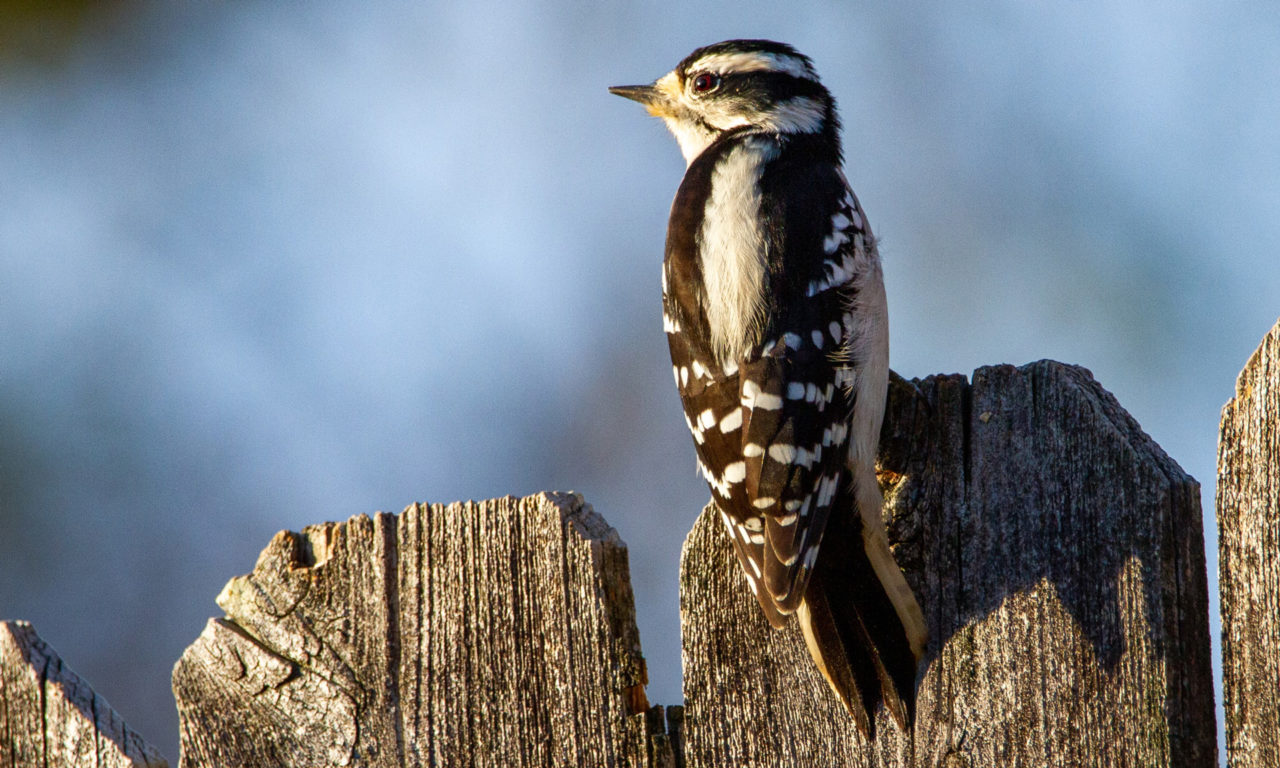Woodpeckers: A Comprehensive Overview to Comprehending These Distinct Birds
Woodpeckers, with their unique habits and physical characteristics, have actually long astounded the curiosity of ornithologists and nature enthusiasts alike. As we check out the detailed composition, varied species, and eco-friendly importance of woodpeckers, a deeper admiration for these special birds and the mysteries they hold unfolds.

Woodpeckers' Drumming Behavior
Woodpeckers show a balanced and accurate drumming habits that serves different necessary functions in their day-to-days live. This behavior is mainly linked with communication, area defense, and foraging. The distinctive drumming audio is produced by the rapid pecking of their beaks versus tough surfaces such as tree trunks, branches, and even steel things.
Interaction is an important aspect of woodpecker actions, and drumming plays a considerable role in this procedure. Woodpeckers make use of drumming to establish their existence, draw in friends, and keep call with their partners and offspring. The frequency, strength, and period of drumming sequences convey particular messages to various other woodpeckers in the location.
Along with communication, woodpeckers use drumming behavior for region protection. Woodpeckers in Florida. The loud and repetitive drumming offers as a cautioning to prospective intruders, signifying that the location is currently declared. By establishing their region through drumming, woodpeckers reduce the possibility of conflicts over useful resources such as food and nesting websites
Moreover, woodpeckers also employ drumming as a foraging strategy. The balanced pecking aids them find pests hiding underneath the bark of trees by developing vibrations that interfere with the target's camouflage. This actions showcases the versatility and ingenuity of woodpeckers in using their drumming abilities for numerous essential purposes.
One-of-a-kind Adjustments for Tree Climbing
Having actually understood the art of drumming to connect, protect area, and forage, woodpeckers have advanced distinct adaptations that promote their exceptional climbing up abilities in their arboreal environments. One key adjustment is their specialized feet. Woodpeckers have zygodactyl feet, with two toes directing forward and 2 toes aiming backward. This arrangement provides a solid grip on the upright surface areas of trees, enabling them to cling easily while foraging for insects or drumming. In addition, woodpeckers possess stiff tail feathers that function as a prop to support their bodies as they climb. These tail plumes give stability and equilibrium, making it possible for woodpeckers to steer up tree trunks with accuracy and agility.
Additionally, woodpeckers have powerful neck muscular tissues and a distinct skull structure that help in their climbing up capacities. Their solid neck muscular tissues enable them to rapidly peck at tree bark without experiencing whiplash, while their thick head and little mind serve as shock absorbers, safeguarding them from the impact of duplicated drumming. These adjustments collectively enable woodpeckers to pop over to these guys browse the upright world of trees with performance and grace.

Role of Woodpeckers in Ecological Communities
By foraging for pests under the bark of trees, woodpeckers help manage pest populations, protecting against episodes that can damage the general health and wellness of the woodland. In addition, woodpeckers produce tooth cavities in trees that serve as important nesting sites for a range of other bird types, advertising biodiversity within the environment.
In addition, the drumming and articulations of woodpeckers play a vital role in interaction and territory establishment. These audios not just offer to bring in mates however also assist specify borders between different woodpecker territories, reducing problems and advertising an unified coexistence within the woodland neighborhood. Generally, the visibility of woodpeckers in forest communities highlights their value as keystone varieties, influencing the characteristics and functioning of these environments in complex means.
Makeup: Specialized Beaks and Feet
In the detailed internet of forest ecological communities, the specialized beaks and feet of woodpeckers are vital adaptations that enable them to satisfy their crucial ecological duties. Woodpeckers possess distinct anatomical attributes that are particularly created to help them in their foraging and nesting behaviors.
The most distinctive feature of woodpeckers is their solid, chisel-shaped beaks. These navigate to this website beaks are flawlessly adapted for boring into timber to discover pests, larvae, and sap covert under the bark of trees. The strong muscles and durable structure of their beaks permit woodpeckers to peck at a rate of as much as 20 times per secondly without creating damage to their heads.
Additionally, woodpeckers have actually specialized feet that aid in their acrobatic climbing capabilities. Their feet have two toes pointing onward and two toes pointing backward, supplying a strong grip on vertical surfaces (Woodpeckers in Florida). This special foot setup, in addition to rigid tail feathers that serve as a helpful prop, allows woodpeckers to cling to tree trunks Recommended Reading and branches easily while they look for food or excavate nesting dental caries
Woodpecker Variety Variety
Woodpeckers are a varied team of birds discovered across numerous ecological communities worldwide, with over 200 recognized species displaying adaptations to various atmospheres. Woodpeckers have progressed to live in a variety of settings, from woodlands and forests to meadows and deserts, each offering distinct difficulties that have affected the development of distinctive woodpecker varieties.
An additional adding variable to woodpecker varieties variety is their specialized feeding actions. Various species have actually advanced to exploit various food sources, such as insects, tree sap, fruits, and nuts, leading to the advancement of certain adaptations in beak form, size, and toughness. These adaptations make it possible for woodpeckers to forage successfully in their respective habitats, decreasing competitors among varieties and promoting specific niche differentiation. Additionally, geographic seclusion and historic aspects have played a role fit the circulation and variety of woodpecker varieties, leading to the broad array of specialized adaptations seen in these interesting birds.

Final Thought
In conclusion, woodpeckers are interesting birds that display unique drumming actions, specialized adaptations for tree climbing, and play vital functions in ecosystems. With a diverse range of woodpecker species discovered worldwide, these birds are vital for maintaining the health and wellness and equilibrium of woodlands and woodlands.